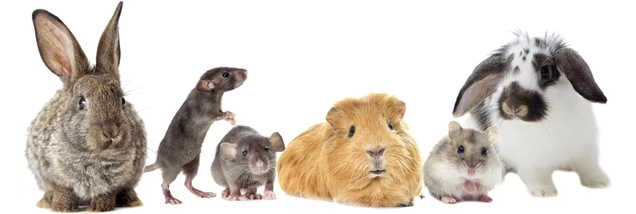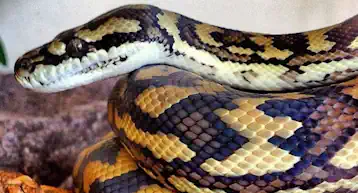The Top Culprits: Foods That Spell Trouble in Your Lizard’s Diet
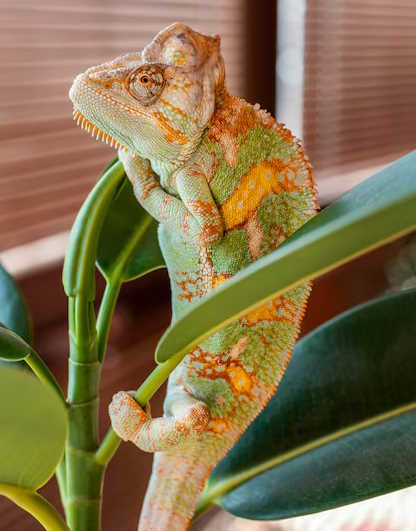
As devoted reptile owners, we understand the intricacies of keeping pet lizards. Amidst providing comfortable enclosures and plenty of natural sunlight, a central tenet of pet care is their diet. While lizards can be quite the connoisseurs of a varied diet, there are certain items in the culinary world that are, for a lack of a friendlier term, off-limits. These food mistakes can swiftly turn a happy chameleon to a moody monitor.
Here, we’ll shed light on the foods that are decidedly bad for your pet lizards and suggest nutritious alternatives. Remember, dietary guidelines are not one-size-fits-all, but this post aims to provide a helpful handbook for lizard lovers to create a menu that’s both enjoyable and healthy for our scaled companions.
Favorite Pet Lizard Species
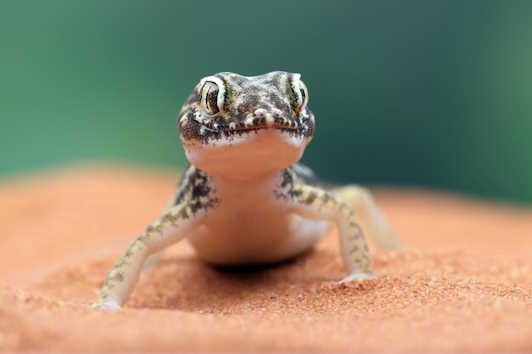
Here’s a little something for all the reptile enthusiasts out there who are pondering over which scaly friend might best fit into their lives. Picking the perfect pet lizard can be a mesmerizing adventure in itself. Each species boasts its own unique charm, requirements, and ways to tug at your heartstrings. To help you on this exciting journey, we’ve rounded up a list of the top 10 pet lizard species that have captured the hearts of reptile lovers worldwide:
Bearded Dragons: Affectionately known as “beardies,” these content companions are known for their docile nature and ease of handling, making them ideal for beginners.
Leopard Gecko: Sporting vibrant patterns, these nocturnal cuties are low maintenance and have a friendly disposition.
Crested Gecko: Famous for their “eyelash” extensions, crested geckos require minimal space and offer a variety of colorations.
Blue-Tongued Skink: With their distinctive blue tongues and robust size, these skinks are gentle giants that love to interact with their humans.
Veiled Chameleon: Known for their striking colors and independently mobile eyes, veiled chameleons are a bit more of a challenge but incredibly rewarding for experienced owners.
Green Anole: The perfect pick for a vibrant, active display, green anoles are small but entertaining to watch.
African Fat-tailed Gecko: Cousins to the leopard gecko, these geckos are known for their calm demeanor and enjoy being handled.
Uromastyx: These desert dwellers have a unique appearance and thrive in a hot, arid setup, feeding primarily on greens.
Argentine Black and White Tegu: For those looking for something larger, tegus are intelligent and can form strong bonds with their owners.
Chinese Water Dragon: Perfect for those ready to create a mini rainforest at home, these dragons are active and require a bit more care but are incredibly rewarding companions.
Choosing your perfect lizard companion starts with understanding your lifestyle, what you’re looking for in a pet, and how much time and space you can dedicate to their care. Whether you’re mesmerized by the calm demeanor of a bearded dragon or the vibrant energy of a green anole, there’s a lizard out there waiting to become your newest family member.
1. Foods Bad for Lizards
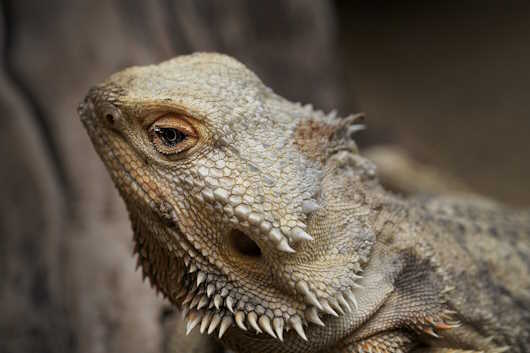
Certain edibles that might be part of our daily human diet are like kryptonite for lizards due to their unique digestive systems. Here are a few items hat can pose severe risks and lead to potentially long term health problems.
Avocados: These green wonders might be a superfood for humans, but they’re incredibly toxic to lizards, causing potential heart problems and even death.
Dairy Products: Lizards lack the enzymes necessary to digest lactose, making milk, cheese, and other dairy products a big no-no.
Onions and Garlic: These kitchen staples can lead to blood cell damage and digestive issues in lizards.
Chocolate: Just like dogs, lizards cannot tolerate theobromine found in chocolate, which can be fatal.
Caffeinated Beverages: Tea, coffee, and soda can severely dehydrate your lizard and lead to heart complications.
Rhubarb: This plant contains oxalic acid, which can cause kidney failure in lizards.
Citrus Fruits: The high acidity of lemons, oranges, and limes can upset a lizard’s stomach, leading to discomfort and potential health issues.
Raw Meat: Uncooked meat can contain bacteria harmful to lizards and lacks the necessary vitamins when not part of a balanced diet.
Wild-Caught Insects: Insects caught from your backyard might carry pesticides or parasites that can harm your lizard.
Bread and Processed Foods: These foods are not only nutritionally void for lizards but can also lead to digestion problems and obesity.
Remember, treating your lizard to the right diet is essential for their health and longevity. Avoiding these culinary culprits can help ensure your beloved reptile remains happy and healthy for years to come.
2. Safe and Nutritious Alternatives
Now that we’ve cleared out the kitchen of the hazardous groceries, it’s time to restock with items that offer real nutritional value and are safe for your pet lizard to enjoy.
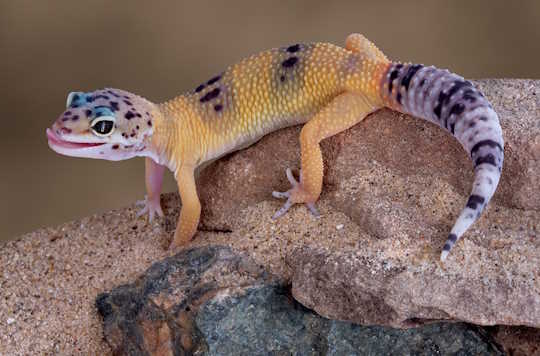
Top 10 Best Food Items for Lizards
Ensuring your lizard has a balanced and nutritious diet is fundamental to their well-being. Here’s a list of the top 10 best foods that are safe and beneficial for your pet lizard:
Leafy Greens: Kale, collard greens, and dandelion leaves are rich in vitamins and can form the base of a healthy diet.
Squash: Butternut, spaghetti, and acorn squash, finely chopped or pureed, provide essential nutrients.
Flowers: Edible varieties like hibiscus, dandelions, and nasturtiums are not only safe but also interesting for your lizard to eat.
Fruits: Apples, pears, and melons can be offered in moderation for a sweet treat. Make sure they are peeled and finely chopped.
Insects: Live prey like crickets, mealworms, and dubia roaches should be gut-loaded for additional nutrition and dusted with a calcium supplement.
Commercial Lizard Food: High-quality, brand-specific foods designed for pet lizards can be a convenient and balanced diet base. These food items are also provide minerals and other nutritional content needed for a balanced diet.
Berries: Strawberries, blueberries, and raspberries are great for an occasional treat, packed with antioxidants.
Sweet Peppers: Red, yellow, and green peppers finely chopped can add variety and boost vitamin C intake.
Herbs: Fresh herbs like basil, parsley, and cilantro add flavor and a dash of nutrition to their meals.
Carrots: Grated or finely chopped, carrots are a good source of vitamin A, crucial for healthy skin and vision.
While this list offers a starting point, it’s essential to tailor your pet’s diet based on their specific species, size, age, and health needs. Remember, variety is key to providing a spectrum of nutrients, and always consult with a veterinarian specializing in reptiles for dietary advice tailored to your unique lizard friend.
There are many other fruits and vegetables like iceberg lettuce, swiss chard, bell peppers, collard greens, turnip greens, mustard greens, and green beans that your friend may enjoy and help them avoid vitamin deficiencies. Omnivorous lizards will eat almost anything they are fed. It is up to us to make sure they are eating a nutritional and balanced diet.
Calcium Supplements
Lizards sometimes need a boost beyond their diet. Calcium supplements dusted onto their food can help prevent deficiencies and ensure their skeletal and muscular systems are in tip-top shape. Some lizard species have higher calcium needs than other captive reptiles.
Enhancing Calcium Absorption in Lizards
Ensuring your lizard effectively absorbs the calcium in their diet is just as crucial as the act of supplementing it. One of the primary factors that aids in calcium absorption is proper exposure to ultraviolet light. Lizards synthesize vitamin D3 when their skin is exposed to UVB rays, enabling them to absorb and utilize calcium effectively. Thus, providing a UVB light source in their habitat is imperative for their overall health and well-being.
Additionally, maintaining the right balance of calcium to phosphorus ratio in their diet – ideally a ratio of 2:1 – helps prevent bone diseases and ensures optimal health. Always consult with a reptile-savvy veterinarian to tailor the dietary and environmental needs specifically to your lizard’s requirements, guaranteeing they lead a long, happy, and healthy life.
Understanding Metabolic Bone Disease in Lizards
Metabolic Bone Disease (MBD) is a common yet preventable condition in lizards, resulting from a calcium, phosphorus, or vitamin D3 imbalance in their diet. This disease leads to weakened bones, making them susceptible to fractures and deformation. Symptoms to watch for include lethargy, swollen limbs, and difficulty moving.
A diet rich in calcium, balanced with phosphorus, and adequate UVB light exposure are critical preventive measures. Regular veterinary checkups can help catch the early signs of MBD, ensuring your lizard maintains a strong skeletal structure and overall health.
3. Feeding Schedule and Portions
Feeding your pet lizard can be a delightful daily interaction. However, it’s important to strike the right balance in frequency and quantity.
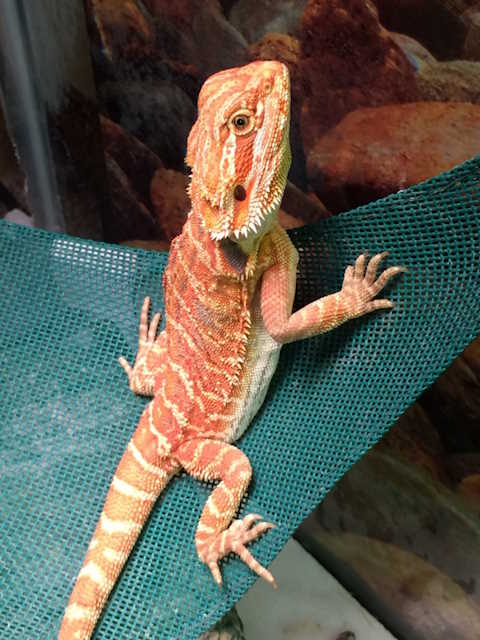
Frequency
Most lizards, unlike other reptiles, should be fed daily, but the type and quantity of food may vary. Some species require daily insects, while others might thrive on a predominantly vegetarian diet.
Portion Control
Lizards are notorious for either having insatiable appetites or being incredibly picky. However, getting portion control right is key to maintaining a healthy weight and avoiding the development of chronic health issues.
Hydration
Many lizards will not only drink water but will also absorb it through their skin. A shallow dish of water and regular misting of their enclosure can maintain their hydration needs.
Heating
Providing the right temperature for your pet lizard is crucial for their health and well-being. These cold-blooded creatures rely on external heat sources to regulate their body temperature. It’s important to monitor the temperature closely with a reliable thermometer. Being cold can also significantly impact your lizards eating schedule.
4. Finding the Balance
Adjusting to a new diet can be a process. Patience and keen observation of your lizard’s response to different foods will help you find the perfect balance.
Keep a Food Diary
Much like in the human world, tracking what you eat can be insightful. Keeping a record of what your pet eats and their reactions can be helpful.
Monitoring Health
Regular vet checkups can be reassuring. A professional can advise on dietary adjustments and offer vital health assessments of your lizard.
A Pet’s Life
Pets require commitment, and adapting a pet lizard’s diet requires dedication. Ensuring their diet is wholesome and suitable is a visible dedication to their well-being.
5. Conclusion
Caring for a pet lizard is a rewarding responsibility. Watching them thrive under your care rewards back double the effort. Maintaining a diet catered to their specific needs not only ensures their physical condition but also contributes to their overall happiness.
Remember, you are your pet’s whole world, and the choices you make for them (from the food you offer to the care you provide) contribute to their well-being. By steering clear of the notorious foods and opting for the safe, nutritious alternatives, you’re ensuring a happy and healthful life for your beloved lizard. Keep feeding them love and attention along with their meals, and you’ll have one content friend on your hands.
FAQs on Feeding Your Pet Lizard
How often should I change my lizard’s water?
It’s essential to provide fresh water daily to ensure your lizard stays hydrated and healthy. Regularly cleaning the water dish to prevent the growth of bacteria is also crucial.
Can I feed wild insects to my pet lizard?
Feeding a wild insect is not recommended due to the risk of pesticide exposure and the potential for parasites that can harm your lizard. It’s safer to purchase feeder insects from reputable sources.
How can I tell if my lizard is overweight?
Signs of an overweight lizard may include difficulty moving around, noticeable fat pads on the body, and a swollen abdomen. Regular check-ups with a vet specializing in reptiles can help monitor your lizard’s health.
Is it necessary to use a calcium supplement?
Yes, calcium supplements are vital to prevent bone diseases and ensure proper development. The frequency and amount should be tailored to your lizard’s specific needs, so consulting a vet is advisable.
What should I do if my lizard refuses to eat certain foods?
Lizards can be picky eaters. Trying different presentation methods, such as chopping foods into smaller pieces or mixing them with favored items, may help. If the problem persists, consult a vet for guidance.
How can I ensure the food I provide is safe and nutritious?
Researching your specific species of lizard will help you understand their dietary needs. Offering a variety of approved foods and consulting with a vet can ensure you’re providing a balanced and nutritious diet.
Can lizards eat food intended for other pets, like dog or cat food?
It’s generally not advisable to feed your lizard dog or cat food as it doesn’t meet their nutritional requirements and can cause health issues. Stick to foods recommended for your specific type of lizard.
Are all lizards carnivorous lizards?
Not all lizards are carnivorous; their diets can vary significantly between species. While some lizards, like the Bearded Dragon, are omnivorous lizards that enjoy a mix of fruits and vegetables and insects, others, such as certain species of geckos, may lean more towards a fruit-based diet. There are also purely carnivorous species that rely entirely on insects or even small mammals for nutrition. Understanding the specific dietary needs of your lizard species is crucial for their health and longevity.
Caring for your pet lizard by offering them a proper diet and environment is key to their well-being. Should you have more questions or concerns regarding your lizard’s diet or health, reaching out to a reptile-savvy veterinarian is always a good step.



